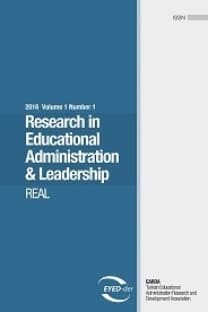“Navigating Uncharted Waters”: New Teacher Mentoring and Induction
“Navigating Uncharted Waters”: New Teacher Mentoring and Induction
division-wide systems-embedded mentoring/induction program new teachers, Support–Accessibility–Collaboration (SAC),
___
- Bullough, R. V. (2012). Mentoring and new teacher induction in the United States: A review and analysis of current practices. Mentoring & Tutoring, 20(1), 57–74.
- Carver-Thomas, D. (2018). Diversifying the teaching profession: How to recruit and retain teachers of color. Retrieved from https://learningpolicyinstitute.org/product/diversifying-teaching-profession
- Ehrich, L. C., Hansford, B., & Tennent, L. (2004). Formal mentoring programs in education and other professions: A review of the literature. Educational Administration Quarterly, 40 (4), 518-540.
- Furlow, G. (2019). All new teachers need mentoring programs. TeacherReady. Retrieved from https://www.teacherready.org/new-teachers-mentoring-programs
- Galloway, M. K., & Ishimaru, A. M. (2015). Radical recentering: Equity in educational leadership standards. Educational Administration Quarterly, 51(3), 372–408.
- Goldrick, L., Osta, D., Barlin, D., & Burn, J. (2012). Review of state policies on teacher induction. Retrieved from https://core.ac.uk/download/pdf/71357418.pdf
- Goldrick, L. (2016). Support from the start: A 50-state review of policies on new educator induction and mentoring. Retrieved from https://studentsatthecenterhub.org/resource/support-from-the-start-a-50-state-review-of-policies-on-new-educator-induction-and-mentoring
- Greenberg, M. T., Brown, J. L., & Abenavoli, R. M. (2016). Teacher stress and health. Retrieved from https://www.rwjf.org/en/library/research/2016/07/teacher-stress-and-health.html
- Harmsen, R., Helms-Lorenz, M., Maulana, R., & van Veen, K. (2019). The longitudinal effects of induction on beginning teachers’ stress. British Journal of Educational Psychology, 89(2), 259–287.
- Haverback, H. R. (2020). Middle level teachers quarantine, teach, and increase self-efficacy beliefs: Using theory to build practice during COVID-19. Middle Grades Review, 6(2), 1–6.
- Hobson, A. J. (2021). Bringing mentoring ONSIDE: Averting judgementoring and enhancing the professional learning, development, and well-being of teachers. In E. H. Reames & L. J. Searby (Eds.), The art and science of mentoring (pp. 49–74). Charlotte, NC: Information Age.
- Hudson, P. (2012). How can schools support beginning teachers? A call for timely induction and mentoring for effective teaching. Australian Journal of Teacher Education, 37(7), 71–84.
- Ingersoll, R. M., & May, H. (2011). Recruitment, retention, and the minority teacher shortage. Retrieved from https://repository.upenn.edu/cgi/viewcontent.cgi?article=1232&context=gse_pubs
- Ingersoll, R. M., & Smith, T. (2004). Do teacher induction and mentoring matter? NASSP Bulletin, 88(638), 28–40.
- Ingersoll, R. M., & Strong, M. (2011). The impact of induction and mentoring programs for beginning teachers: A critical review of the research. Review of Educational Research, 81 (2), 201–233. Kardos, S. M., & Johnson, S. M. (2010). New teachers’ experiences of mentoring: The good, the bad, and the inequity. Journal of Educational Change, 11(1), 23–44.
- Kearney, S. (2019). The challenges of beginning teacher induction: A collective case study. Teaching Education, 32(2), 142–158.
- Kram, K. E. (1983). Phases of the mentor relationship. Academy of Management Journal, 26, 608–625.
- Kratochwill, T. R., DeRoos, R., & Blair, S. (2011). Classroom management module. Retrieved from http://www.apa.org/education/k12/classroom-mgmt.aspx
- Lopez, A. E. (2013). Collaborative mentorship: A mentoring approach to support and sustain teachers for equity and diversity. Mentoring & Tutoring, 21(3), 292–311.
- Mathews, J. (2011, December 18). New teacher decries lesson plan gap. The Washington Post. Retrieved from https://www.washingtonpost.com/blogs/class-struggle/post/new-teacher-decries-lesson-plan-gap/2011/12/17/gIQAt0C50O_blog.html
- Middleton, K. V. (2020). The longer-term impact of COVID-19 on K–12 student learning and assessment. Educational Measurement, 39(3), 41–44.
- Mullen, C. A., Fitzhugh, G. II, & Hobson, A. J. (2022). District-wide mentoring: Using Kram’s model to support educators. Kappa Delta Pi Record, 58(1), 26–31.
- Mullen, C. A., & Badger, S. C. (in press). Leadership support in pandemic: Middle school teacher perceptions of emergency remote teaching. Research in Middle Level Education.
- National Education Association. (2022). Supporting teacher induction and mentoring programs in light of COVID-19. Retrieved from https://www.nea.org/professional-excellence/student-engagement/tools-tips/supporting-teacher-induction-and-mentoring
- National Policy Board for Educational Administration. (2015). Professional standards for educational leaders. Retrieved from https://www.npbea.org/wp-content/uploads/2017/06/Professional-Standards-for-Educational-Leaders_2015.pdf
- New Teacher Center. (2007). The costs and benefits of a comprehensive induction program. Research Brief. Retrieved from https://www.gwaea.org/app/uploads/sites/19/2021/08/BRF.pdf
- New Teacher Center. (2018a). High quality mentoring and instructional coaching practices. Resource. Retrieved from https://newteachercenter.org/wp-content/uploads/2021/07/High-Quality-Mentoring-Instructional-Coaching-Practices_RB21.pdf
- New Teacher Center. (2018b). Mentor practice standards. Retrieved from https://newteachercenter.org/wp-content/uploads/2021/07/Mentor-Practice-Standards_ RB21.pdf
- Rigby, J. G., & Tredway, L. (2015). Actions matter: How school leaders enact equity principles. In M. Khalifa, N. Witherspoon Arnold, A. F. Osanloo, & C. M. Grant (Eds.), Handbook of urban educational leadership (pp. 329–347). Lanham, MD: Rowman & Littlefield.
- Sasson, I., Kalir, D., & Malkinson, N. (2020). The role of pedagogical practices in novice teachers’ work. European Journal of Educational Research, 9(1), 457–469.
- Smith, T., & Ingersoll, R. (2004). What are the effects of induction and mentoring on beginning teacher turnover? American Educational Research Journal, 41(3), 681–714.
- Virginia Board of Education. (2021). Guidelines for uniform performance standards and evaluation criteria for teachers. Retrieved from https://www.doe.virginia.gov/teaching/performance_evaluation/teacher/index.shtml
- Wong, H. K. (2004). Induction programs that keep new teachers teaching and improving. NASSP Bulletin, 88(638), 41–58.
- Yin, R. K. (2018). Case study research and applications: Design and methods (6th ed.). Thousand Oaks, CA: Sage.
- Young, V. M., Schmidt, R., Wang, H., Cassidy, L., & Laguarda, K. (2017). A comprehensive model of teacher induction: Implementation and impact on teachers and students. Report. Retrieved from https://newteachercenter.org/wp-content/uploads/2021/07/NTC-i3-Validation-Comprehensive-Report-with-App_Final.pdf
- Yayın Aralığı: Yılda 4 Sayı
- Yayıncı: Dokuz Eylül Üniversitesi
School Leadership and Gender in Africa: A Systematic Overview
Tony BUSH, Jocelyne KİREZİ, Richard ASHFORD, Derek GLOVER
Private Schools' Marketing Tactics, Parents’ Loyalty and School Image: A Structural Equation Model
Sümeyye MERMER, Niyazi ÖZER, Süleyman Nihat ŞAD
Reflections on “The American Scholar”: Words of Inspiration for These Dark Times
Anette FORSSTEN SEİSER, åsa SÖDERSTRÖM
“Navigating Uncharted Waters”: New Teacher Mentoring and Induction
“Underprepared” Principals Leading Curriculum Reform in Lesotho
